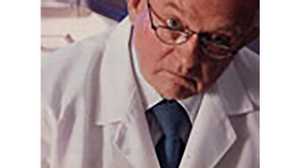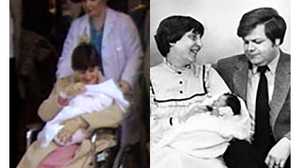Robert Edwards

American fertility expert Howard Jones described him as the sort of person who “was excited every time he woke up in the morning.” But British scientist Robert Edwards was as dogged as he was enthusiastic, a quality that served him well in his decades-long quest for the world's first test tube babies.
Drawn Toward Fertility Research
Robert Edwards almost didn’t end up in the field of fertility research. As a teenager in Manchester, England, he had been sent away to safety in the countryside during the German bombings of early World War II. After serving in the army himself, he was discharged in 1949 and started his college studies in agriculture. Fortunately for infertile couples everywhere, he realized after two years that it was not for him. Edwards switched to zoology and became fascinated by genetics. He successfully applied to a graduate program in Edinburgh and, always short of money, spent much of his time in a lab dubbed the Mouse House, working with “large mice, small mice, fat mice, lean mice, mice with curly moustachios and droopy ears, mice that waltzed or simply jerked their way through their mouse-life in the service of genetic research.” Edwards focused on artificial insemination of mice, learning about their reproductive cycle and experimenting with the effect of various fertility drugs.
Could Infertile Couples Be Helped?
Edwards met and married fellow scientist Ruth Fowler in Edinburgh, and after a one-year fellowship in California, the couple moved to Cambridge University and started a family. In 1960, after the birth of his second daughter, came an epiphany. Edwards and his wife had befriended a childless couple, and when the couple played with their daughters, Edwards was moved by their predicament. “The trees bore fruit,” he later wrote, “the clouds carried rain, and our friends, forever childless, played with our Caroline, our Jennifer.” Edwards had re-implanted embryos in the wombs of mice during his Edinburgh experiments, and he began to wonder if he could do the same with humans.
Research During the Sixties
Working in a bare-bones lab without hot running water, Edwards spent years exploring fertilization in various mammals. He convinced the gynecologist who had delivered his daughters to give him occasional samples of human ovarian tissue. He began devoting his time to fertilizing and culturing human eggs. He described a successful attempt in 1962 when, as he recalled, he fertilized a human egg in a petri dish in his lab. But Edwards was unable to replicate this success until 1965, when he spent a summer at Johns Hopkins working with Howard and Georgeanna Jones. The next breakthrough came in 1968, when Edwards met 55-year-old English gynecologist Patrick Steptoe. Steptoe had developed a technique of abdominal surgery called laparoscopy that allowed the retrieval of mature human eggs. Edwards and Steptoe agreed to join forces. Over the course of their partnership, Edwards traveled the 165 miles between his Cambridge lab and Steptoe’s Oldham practice over 750 times. The 1969 publication of their first successful in vitro fertilization (IVF) experiment — fertilizing eggs in a petri dish — brought the pair international attention and plenty of controversy. But despite all the criticism, Edwards and Steptoe plowed ahead with their research. After viewing human embryos one night in Steptoe’s lab, Edwards would recall that he “had a feeling of being greatly privileged. ... As I walked to the car, I looked up at all the stars, the moon, the night sky over Oldham, and considered the equally amazing sights I had just seen under my microscope.”
Success
Success did not come quickly for the tenacious pair; after the first successful fertilization in a petri dish, it took a decade for Edwards and Steptoe to reach their ultimate goal. Research funds were denied, family relations were strained, critics nsisted that their work would lead to abnormal babies and infanticide, the first IVFpregnancy was ectopic (implanted in the fallopian tube, not in the uterus) and had to be terminated, Steptoe neared retirement age. Then finally, on July 25, 1978, Louise Brown, the world’s first test tube baby, was born. Edwards and Steptoe basked in worldwide acclaim, and over the next few years, as more and more healthy babies arrived and the technical protocols were developed, the controversy over IVF faded. Patrick Steptoe died in 1988, but Edwards continued lecturing on reproductive technology into the 21st century, hosting a 25th birthday party for Louise Brown in 2003 to which some 5,000 test tube babies were invited.







